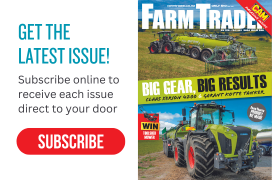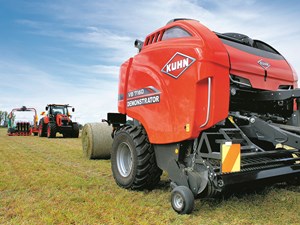Test: Tow and Fert Multi 500
NZ-designed and made, Farm Trader takes a closer look at the newly released Tow and Fert Multi 500 in action
Just like the iconic old blokes at Mainland Cheese factory, there’s a definite art to applying patience and preparation to ensure a better-quality outcome in the end. The team at Tow and Fert seem to have been blessed with this mindset, having invested as much time and thoughtful design as required to perfect their latest development, which is set to be released to the market this month.
Fortunately, our visit to Dannevirke coincided with one of the final test runs and demo days for the machine, giving us the opportunity to have a sneak peek before its official release.
It has been almost six years since I last did a machinery test review on what was then the company’s newest release – the Tow and Fert Multi 1200, a tractor-mounted liquid fertiliser and mineral applicator, which I saw in action on a central North Island dairy farm.
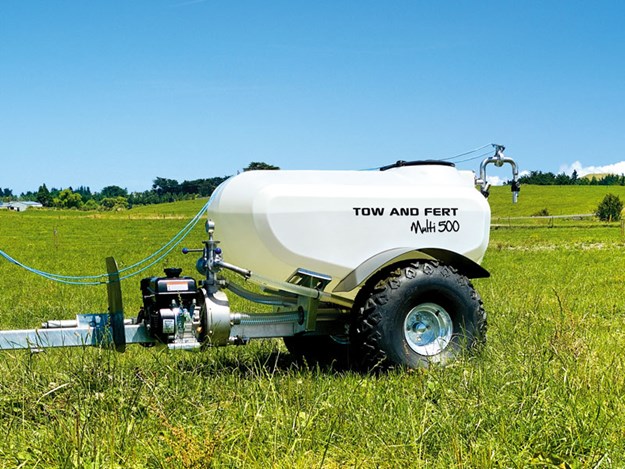 |
|
The Tow and Fert Multi 500 is loaded with features
|
In the years since, the range has been added to with a number of impressive additions, including two new trailed spreaders: the Multi 2800 and 4000, capable of mixing 1000kg urea or 1500kg of urea to be spread over 20 to 40 hectares, depending on spread rate. These machines are both targeted at the larger scale farmer or contractor.
As a New Zealand-owned and operated company renowned for designing and making machinery specifically for the Antipodeans, I was genuinely keen to see what the team had come up with now.
After close to a decade of regular demand and enquiries, the latest addition to the Tow and Fert fleet is also the smallest – the Multi 500.
This new model provides a cost-competitive alternative for the smaller farm or those wanting to prove that the foliar fertilisation application works for their farming system before splashing out on a larger machine. Another market where this model will appeal is the horticultural industry, as with its compact dimensions, it’s perfect for working beneath the likes of kiwifruit canopies or narrow rows of fruit, berry trees or grapes.
Scrutiny of farmers and on-farm practices and new rules and regulations governing what can and cannot be done are only becoming more stringent. All this comes at a time when the world continues to grow and need feeding, requiring farmers to be more productive but with fewer inputs off less farmed area.
While it’s a bit of a head-scratcher for many, this future direction does fit well with the Tow and Fert range of machines, in particular, the new Multi 500 – an affordable entry-level machine ideal for many of those smaller businesses.
If you want to apply solid fert in liquid form, there really is no substitute or alternative capable of doing such a quality job and having the technology and design to achieve the desired mixing and agitation to dissolve product and keep it in suspension and not block boom and spray lines.
The R&D that Tow and Fert put into these particular areas and associated patents have made them a market leader for foliar fert application. Although it might seem straight forward if you don’t have these key points sorted, chances are the end result is going to be substandard.
Operation
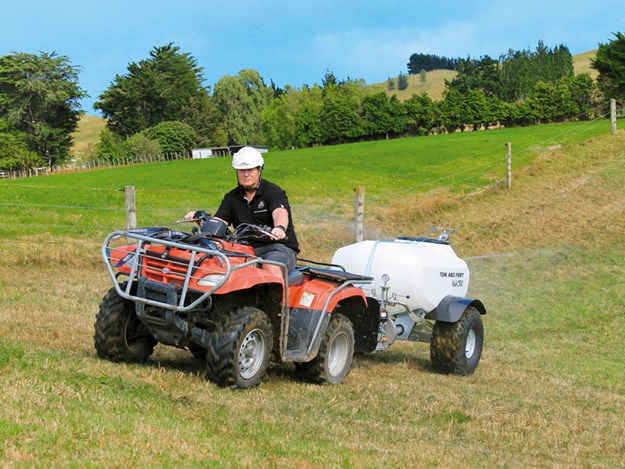 |
|
Recently grazed paddocks ideal for N application with the Multi 500
|
Operating the Multi 500 is refreshingly simple. The hardest part is probably starting the little Kohler petrol engine, although, it’s just a matter of working out the technique like most small engines: choke/no choke/start/etc.
Based on the urea capacity of other machines in the Tow and Fert fleet, this one sits around the 200kg mark (given that the Multi 1000 takes around 400kg).
Depending on the rate of N you want on, a tank with 200kg urea will do two hectares at 46 units per hectare or five hectares if you want a lesser rate (18.4 units per hectare). In testing the Multi 500, a slightly more unusual mix was used – 300kg of lime flour along with molasses/salt mix. This gives what I would call a thick shake mix or paint consistency.
Depending upon what you are applying, the trip to the paddock should be enough to complete the mixing process. Loading height is low and easily accessible from ground level. Although standard 20kg bags of urea and whatever other minerals you may require are easily loaded from the rear at ground level, I did like the stainless large bag spike produced by Tow and Fert to spear the bottom of the big bags and accurately measure how much is being put in the machine (measurable with the on-board scales of the larger machines).
Activating the boom on the standard model is through a two-string pull system, which opens and closes the valve. Electric actuation is an available option. Spreading is straightforward – a pressure gauge sits above the pump and you’re looking for a reading of 20psi, as much higher than that can damage microorganisms, if you happen to be using your machine for that task. The single nozzle boom achieves an accurate 10-metre spread and is mounted high enough so it’s not going to drag on the ground around hills or catch on fence lines like a standard boom.
On test day, we had rolling hills to traverse. These proved no trouble with the single boom nozzle. Also, the low centre of gravity meant that even with a full load, it still felt stable behind your average-sized farm quad. It was a bit breezy, which isn’t ideal for any spraying-type application, but the beauty of having a machine like this on farm is that you can quickly shoot out and do a tank full when the conditions and time suits to give the best results, rather than working in with when it suits the spreading company with larger machines.
Construction
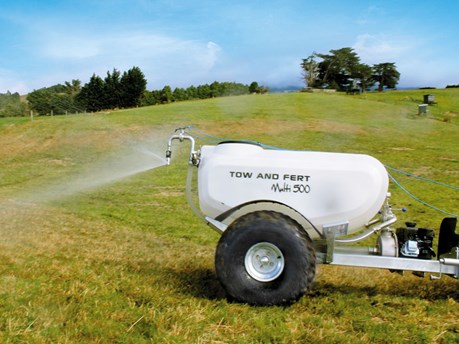 |
|
Single nozzle boom with 10m spread
|
The Tow and Fert range is designed by the team at parent company Metalform in Dannevirke, guaranteeing they are made to suit New Zealand farmers operating in New Zealand conditions.
Given that they’re designed to handle spreading fertilisers, which are notoriously corrosive and hard on metal components, all Tow and Fert machines receive full hot-dip galvanised chassis to prevent the chance of rusting. The tank is all UV stabilised plastic and designed to sit low in the chassis to keep the centre of gravity as low as possible.
Tow and Fert sales manager Michael Smith reckons that with large ATV flotation tyres, going across a hillside with a standard ATV, the Multi 500 was actually more stable than the ATV. With a tare weight of somewhere between 100 and 150kg fully loaded, this would probably exceed the tow rating of your average 500cc farm quad bike, which is probably fine on flat dairy paddocks. However, if you’re planning to use extensively on more hilly terrain, a heavier, more powerful vehicle, like a side by side or ute may be the right machine for the job and ensure it’s not at risk of getting pushed around on steeper hills.
Throughout the machine, fittings such as screws and bolts are all stainless steel to prevent rust. The lines from the pump use standard dairy shed-type fittings. The inline mesh filter is easily accessed to check or clean without requiring any specialised tools.
The single spray nozzle is also stainless, and the Multi 500 comes with another two different nozzles mounted on the sprayer for different application rates. There is an additional selection of other nozzles available, designed to spray underneath trees to suit horticultural applications.
Another point to note is the fact that 90% (or more) of all Tow and Fert machines, if not manufactured in the Metalform factory, are New Zealand-made and sourced. Why is that important? Well, shipping reliability and delivery have been rather a hit and miss in the last 12 months, so there’s some solid reassurance in knowing that parts supply is not an issue with these machines.
Although they are straightforward machines with minimal moving parts to break or need replacing, in the event that you may need some assistance, Metalform are the national sales and distributors of the Tow and Fert range, with a team on the road to take care of servicing and repair requirements nationwide.
Options
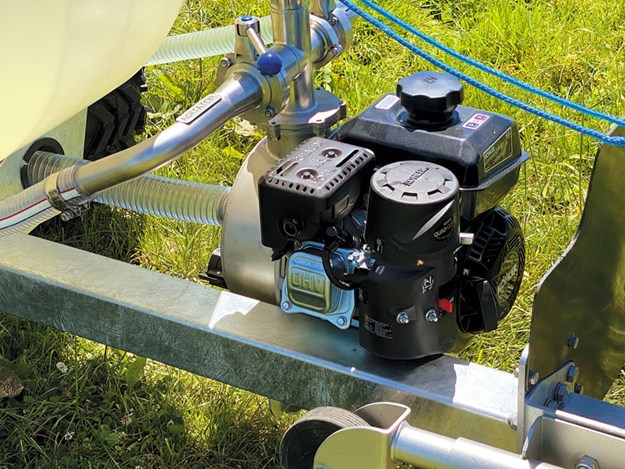 |
|
Reliable Kohler petrol engine
|
Like the rest of the Tow and Fert Multi range, these machines are designed to multi-task. Obvious uses include urea following behind cows or applying minerals and nutrients for cows pre-grazing, such as magnesium, bloat oil, and zinc through the season. There’s the option of applying herbicide at the same time or on its own for spraying out crop paddocks.
Being the first machine out of the factory for 2021, the bells and whistles have been kept to a minimum to give a sharp base price, coming in at around a 1/3 of the price of either the Multi 1000 or Multi 1200 models. However, if you want to up-spec your machine, you can add electric actuation (similar to what is offered on the Multi 1000 rather than the pull string on/off system) and self-filling suction can be added to the pump (for filling at water sources away from the shed). This is particularly handy for cleaning water troughs, which is not an exciting job at the best of times but important for animal health and production.
Summary
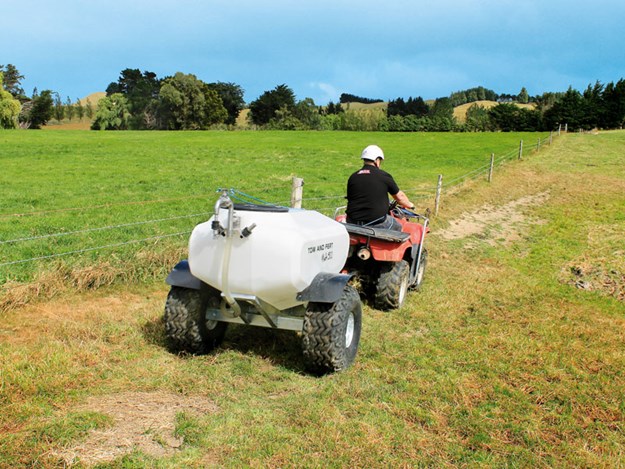 |
|
Mudguards, galvanised steel, stainless fittings and UV-resistant plastic make for low maintenance
|
Tow and Fert have mastered the mixing and agitating process for solid fertiliser with their bigger machines, so it is great to see a smaller, cost-effective machine added to the range with the Multi 500.
Studies have proven the effectiveness of foliar applications of smaller amounts of product achieving results equal to or better than that achieved through applying a greater quantity of solid fertiliser. The effective utilisation of product applied (dollars saved at the fert store), with no adverse effect on production, will be a key factor to survive in farming going forward. It also doesn’t hurt having a relatively short payback term of the initial investment in a Tow and Fert machine. And saving on farm nutrient inputs thereafter.
From what I can see happening in the agricultural space, I can only see Tow and Fert machines such as the Multi 500 becoming more mainstream in New Zealand farming. To allow us to continue to farm in similar manner as we do presently, we need to keep getting more efficient and producing more with less, which is what I believe the Tow and Fert Multi 500 is designed for.
Tow and Fert Multi 500 specifications
| Capacity | 500L |
| Area/tank |
5ha |
| Application rate | 6mins/ha @10km/hr |
| Boom | Single nozzle/10m spread width |
| Operating pressure | 20PSI |
| Pump | Metalform 2" stainless steel |
| Pump powered by | Kohler petrol engine |
| Mounting | Single axle with standard towball coupling |
| Tare weight | 150kg (approx.) |
| Gross weight | 650–750kg approx. |
| Options |
Electric actuator |
Pros
- Quality construction: galvanised steel, plastic tank/hoses, stainless screws fittings
- Easy operation: petrol engine, pull rope boom actuation
- Options available to add features and versatility
- Purchase price for base machine very reasonable
Cons
- Light enough empty, pushing standard quad tow ratings when full (although seemed to tow fine)
Find new and used farming machinery on Farm Trader NZ
Keep up to date in the industry by signing up to Farm Trader's free newsletter or liking us on Facebook

.jpg)










.gif)
.gif)
.jpg)
.jpg)
